Review
Printable
version
May
11, 2000
Announcements
-
Final
in room B130 Van Vleck 12:25pm--2:25pm Tuesday, May 16
-
Room
in center of building
-
cumulative
-
100
questions
-
BRING
CALCULATOR
Review
Outline
-
The
big picture (last time)
-
The
solar system
-
the
Sun
-
9 planets
-
7 major
moons
-
Why
didn't we just start with Mercury? (last time)
-
intro
material
-
Formation
of solar system
-
Earth
and moon in detail, other planets, moons by analogy
-
Specifics
about each planet
-
Surface
features
-
atmosphere
-
internal
structure
Earth
in Detail, other planets by analogy
-
Geology (last time)
-
Atmosphere
-
circulation in atmosphere
caused by convection (equator to poles) and rotation (east-west bands)
-
what other planets have similar
circulation patterns?
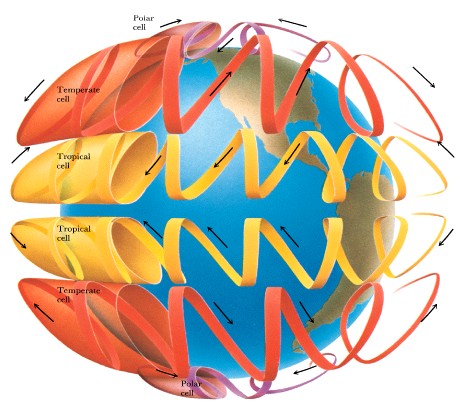
Our
Moon
-
Current
best formation theory
-
impact
with Mars-sized object
-
contrast:
-
Galilean
satellites probably formed with Jupiter
-
Triton
probably captured by Neptune
-
After
formation, didn't do much but get cratered
-
number
of craters indicates age of surface
-
most
active cratering soon after solar system formed
-
some
craters erased by lava flows
-
lava
probably released by large impacts, not volcanos
-
The
moon's gravity raises tides on the Earth
-
distorts
Earth into football shape
-
How
many high tides per day? two
-
tidal
forces of earth on moon slowed moon's rotation so same side always faces
Earth
-
Synchronous
rotation
-
most
other moons have synchronous rotation
-
tidal
forces responsible for heating of moons around larger planets (e.g. Io)
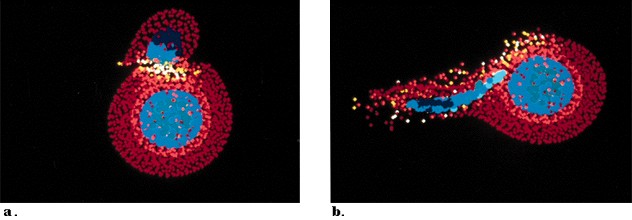
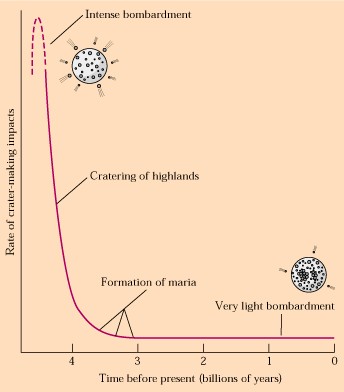
Mare
Imbrium
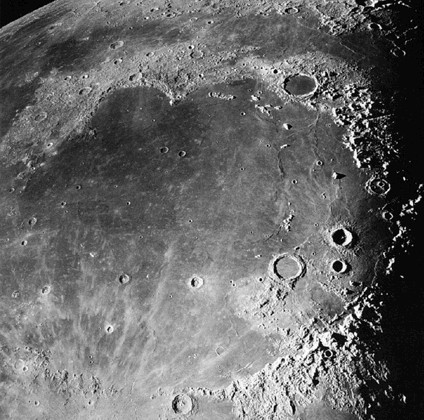
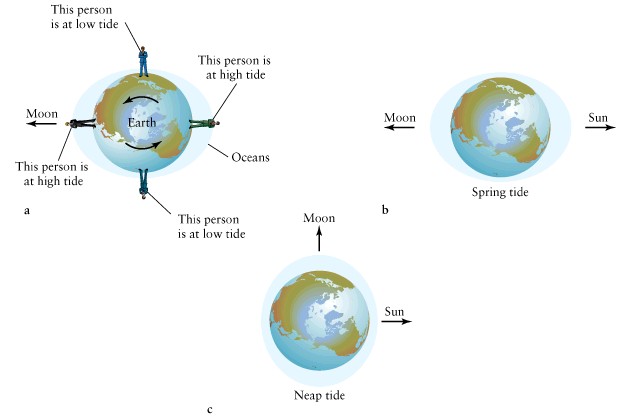
Sun
-
Granules
on Sun caused by convection
-
convection
is known by Jeff as the "lava lamp"
effect
-
Sunspots
caused by: wound up magnetic field
-
Recall
black body radiation: the hotter something is the brighter it gets
-
So,
are sunspots cooler or hotter than the rest of the photosphere (surface
of the sun)?
-
number
of spots cycle every 11 years
-
Sun
steadily releases charged particles that flow outward
-
called
the: Solar Wind
-
source
of particles that cause auroras
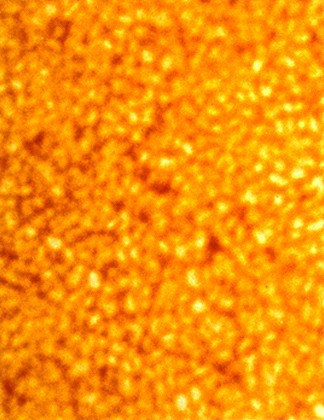
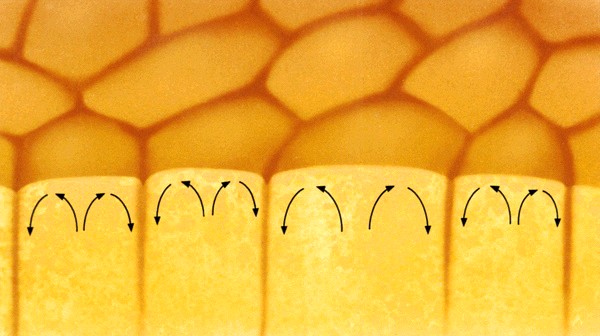
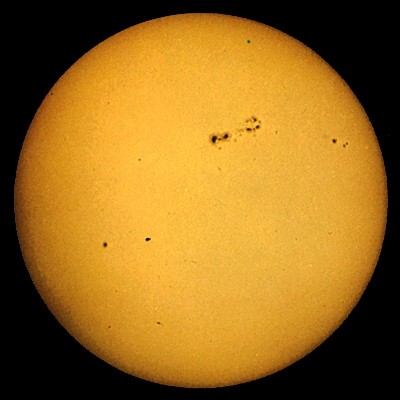
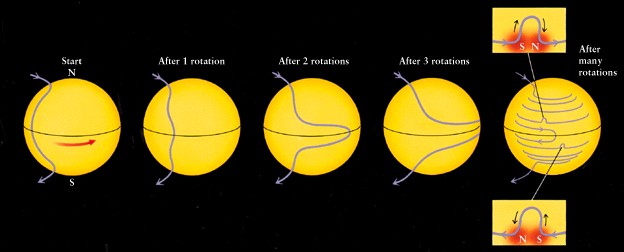
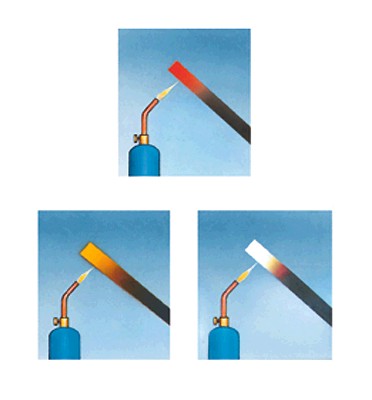
Mercury
-
Does
Mercury have an atmosphere? NO
-
scarps
are long cliffs
-
3-2
spin-orbit coupling
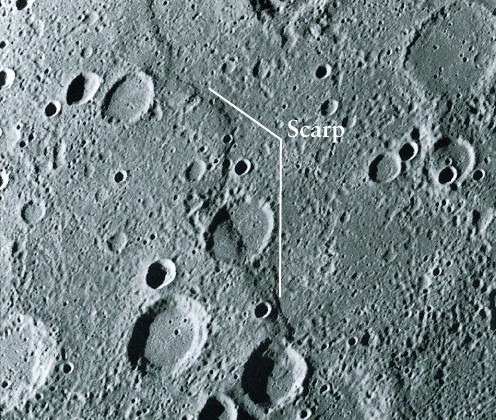
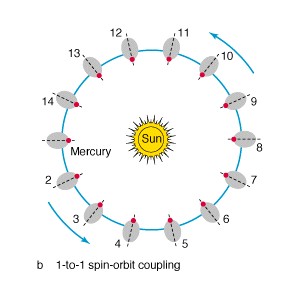
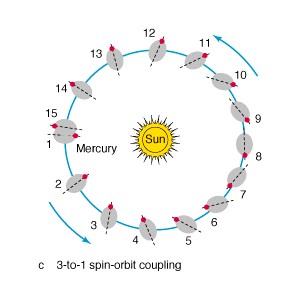
Venus
-
How
big is Venus compare to Earth?
-
Can
you see the surface of Venus in optical light?
-
No,
it is always covered by clouds
-
Greenhouse
effect caused by: carbon dioxide (CO2)
-
Corrosive
atmosphere
-
sulfuric
acid (H2SO4) and worse
-
Does
Venus have active volcanos?
-
maybe
-
spacecraft
measured varying levels of sulfur
-
Sulfur
figures highly in the volcanos of at least two other bodies:
-
Earth,
Io
-
Sulfur
compounds make "rotten egg" smell
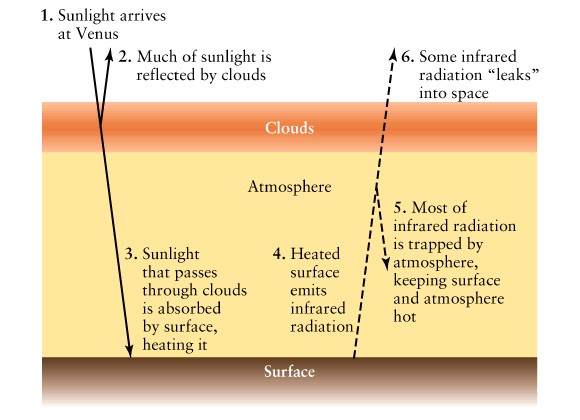
Mars
-
How
big is Mars compared to Earth?
-
Does
Mars have active volcanos? NO
-
No
liquid water now (but used to be)
-
Water
and CO2 ice on surface: where
-
Viking
landers looked for current life on Mars
-
did
they find any?
-
where
is there evidence for previous life on Mars
-
on
a meteorite that came from Mars
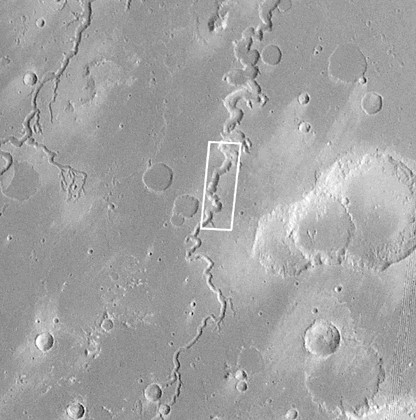
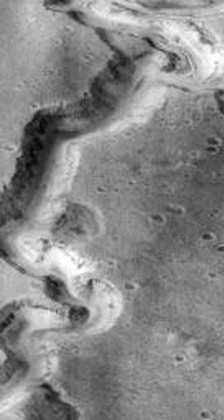
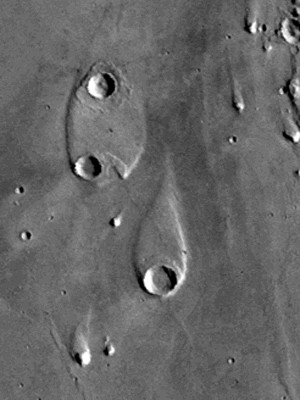
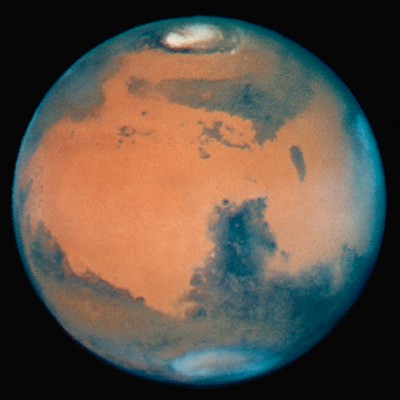
Meteorite
ALH 84001 x 100,000
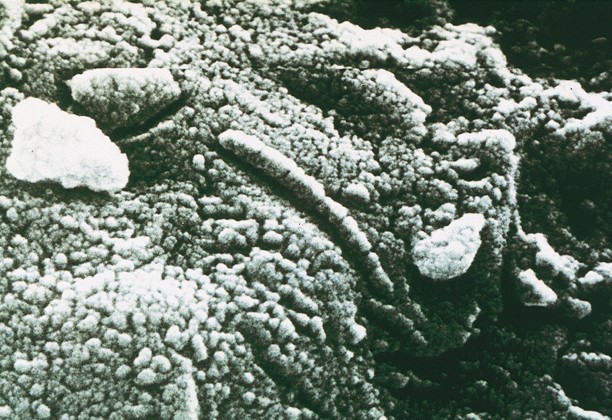
Asteroids
-
Where
is the Asteroid Belt?
-
between
orbits of Mars and Jupiter
-
How
does Jupiter effect the asteroids?
-
makes
Kirkwood gaps
-
asteroids
in gaps get repeatedly disturbed
-
Keeps
Trojan asteroids in their orbits
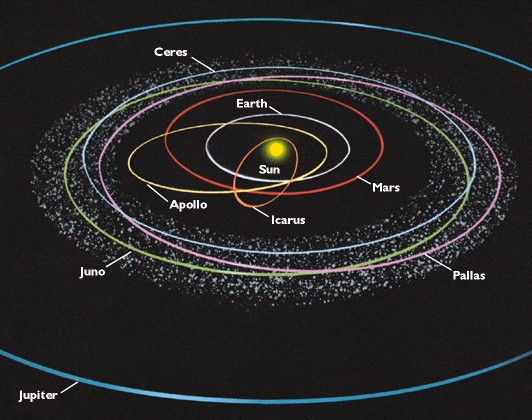
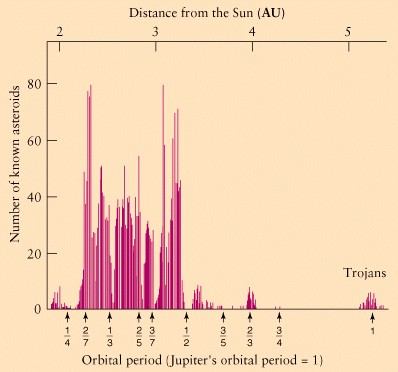
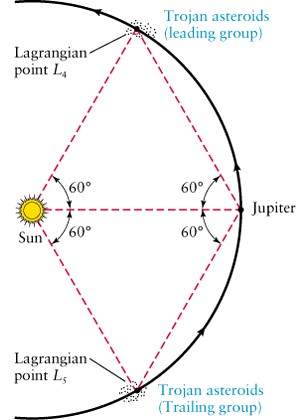
Jupiter
-
Largest
planet in the solar system
-
Identify
belts, zones, white ovals, brown ovals
-
What
causes the Great Red Spot?
-
Jupiter
composed mostly of: hydrogen and helium
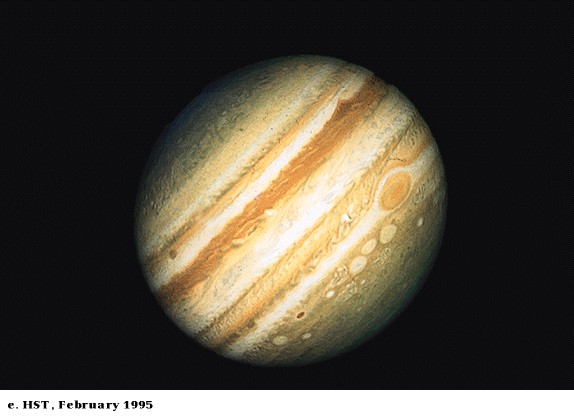
Galilean
Moons
-
What
planet do the Galilean moons orbit around
-
Io's
volcanos spew out sulfur dioxide (SO2)
-
Io
is volcanic because it has internal heat
-
where
does this internal heat come from?
-
tidal
forces
-
Does
Io have craters? NO
-
Is
its surface young or old? Young
-
Europa,
Ganymede, and Callisto are ice covered
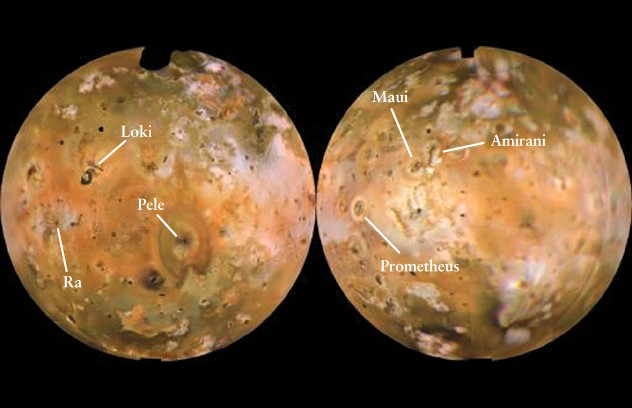
Saturn
-
What
are Saturn's rings made of?
-
snowballs
(ice or ice covered rock)
-
Which
planets have rings?
-
How
are the gaps in Saturn's rings similar to the asteroid belt?
-
both
caused by perturbations of an object in a larger orbit
-
Titan
has a thick atmosphere and may have hydrocarbon (ethane) lakes
Outer
planets
-
Uranus
-
rotation
axis tipped at 98 degrees
-
rotates
retrograde (like Venus, Pluto)
-
blue
color caused by absorption of red light by methane in atmosphere
-
Neptune
-
internal
heat source (like Jupiter, Saturn) causes more circulation than Uranus
-
more
or less clouds than Uranus?
-
Pluto
-
Pluto
and its moon Charon always have the same faces pointed to each other
Numerical
problem examples
-
Given
the semimajor axis of the orbit of a satellite about its planet, how long
does it take for the satellite to make one complete orbit?
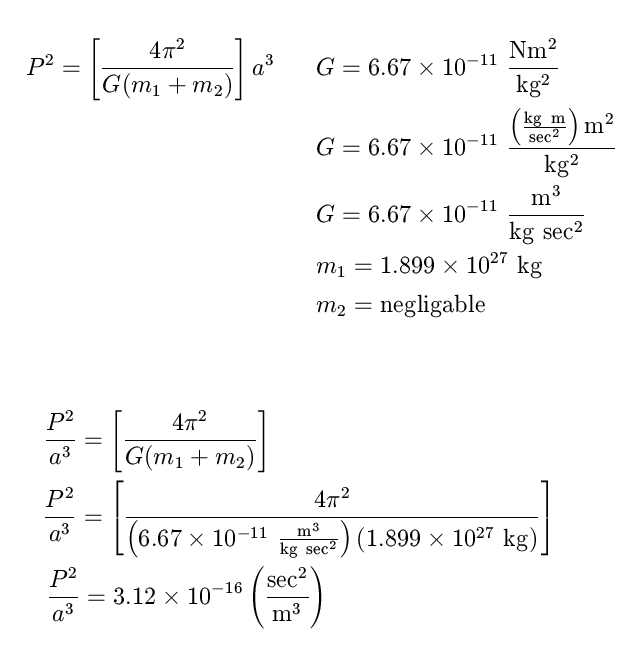
-
Interstellar
hydrogen emits radio waves with a wavelength equal to 21 cm. What
is the frequency of this radio wave? What is the energy?
-
n
= c/l
-
E
= hn
-
h
= 4.135 x 10-15 eV s
-
c
= 3 x 108 m/s
-
be
sure to convert from cm to m
-
Answer:
n
= 1.4 GHz, E = 5.9 x 10-6 eV
-
Radar
observations are used from Venus-orbiting spacecraft to evaluate mountain
heights by measuring the time difference between echoes from mountain peaks
and from the surrounding plains. In this technique, what would be
the time delay from Maxwell Montes, which rises 12 km above the plain?
-
DRAW
A FIGURE!
-
in
this problem, we have time and distance
-
what
third quantity links time and distance?
-
speed
-
Method:
compute
time it takes for light to go 24 km
-
Answer:
8
x 10-5 s = 80 ms

























